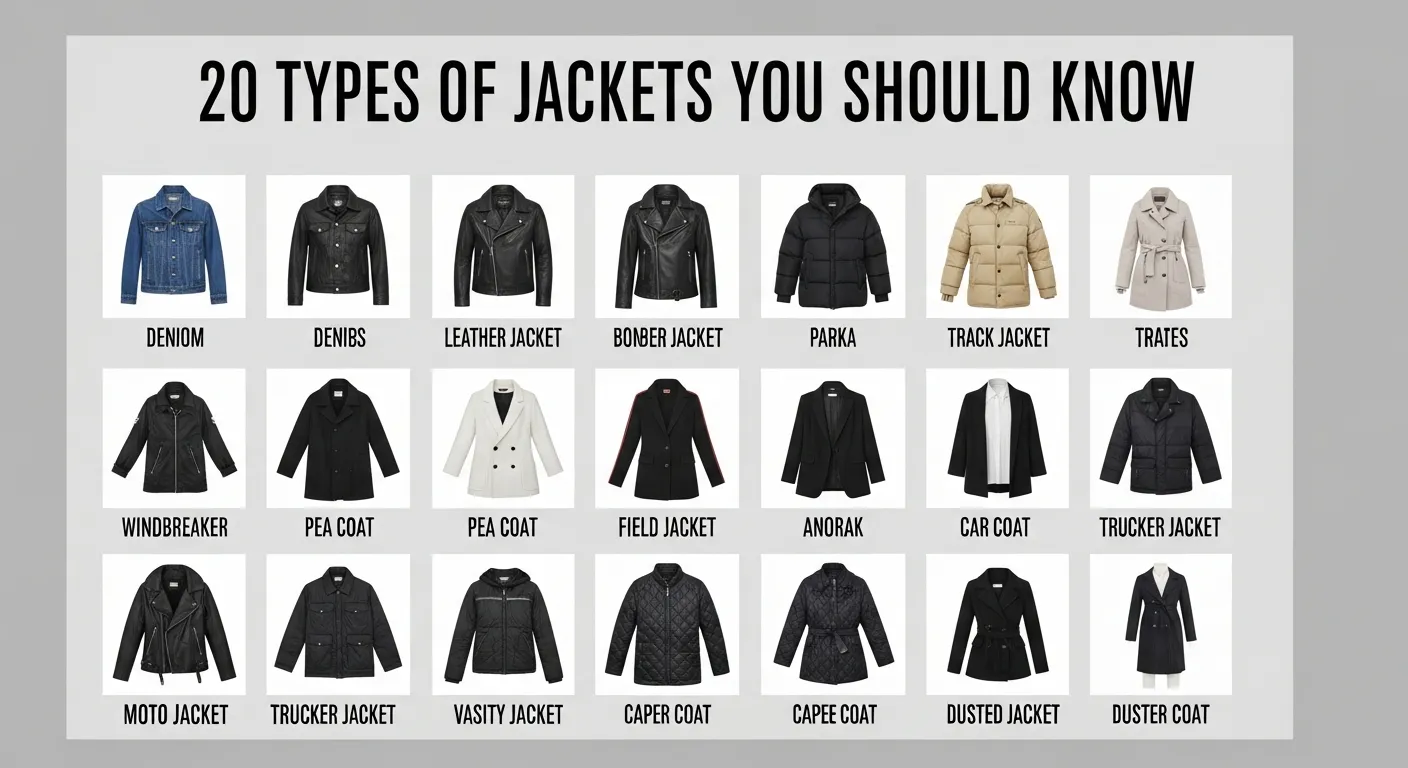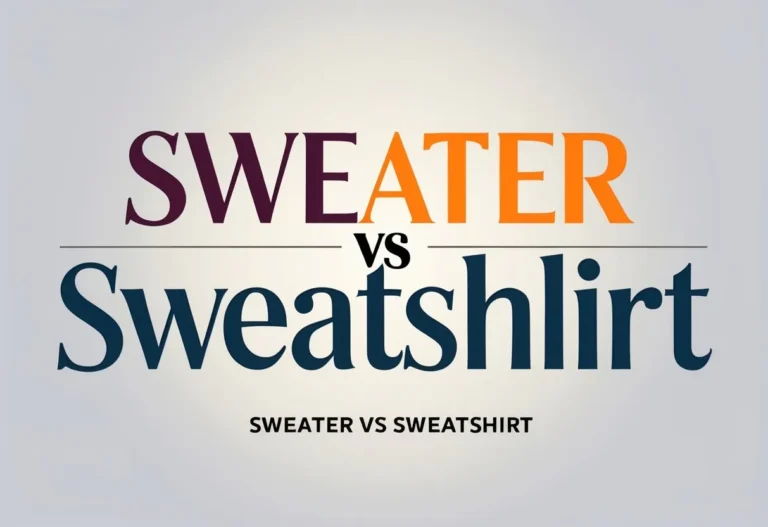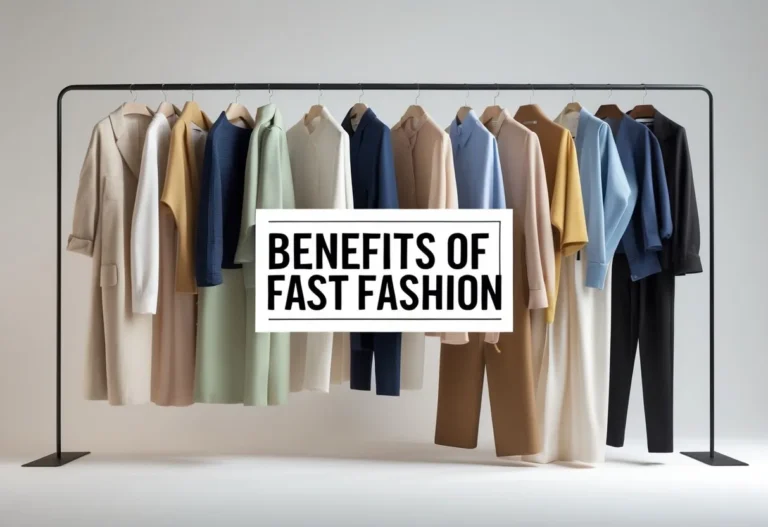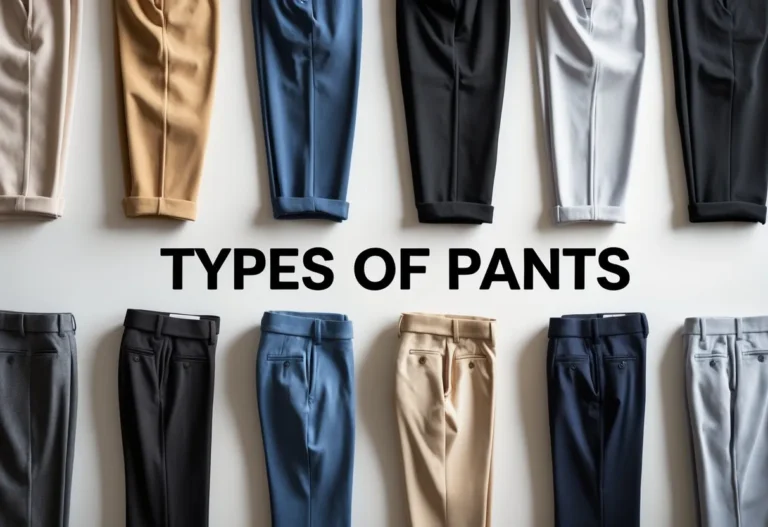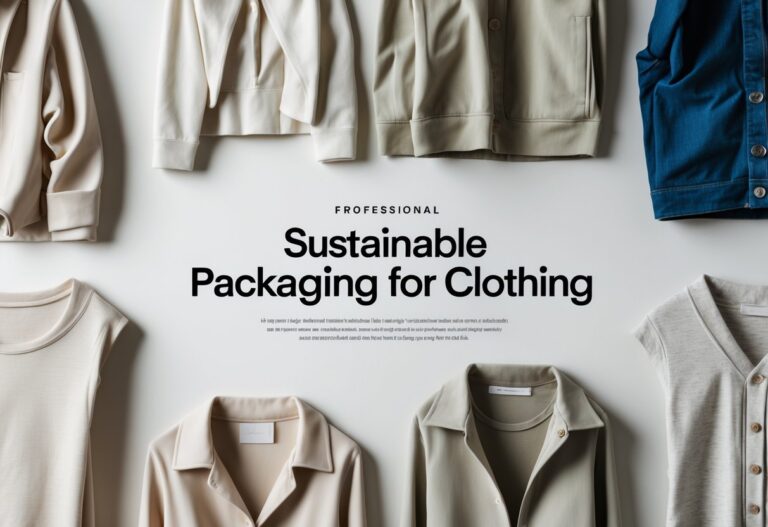20 Types of Jackets Every Wardrobe Should Include
Jackets are an important part of many wardrobes because they offer both style and function. They provide warmth, protection from the weather, and can complete an outfit. People choose jackets based on their needs, climate, and personal taste.

This article explains 20 types of jackets to help readers understand their differences and uses. Knowing the right jacket can make dressing easier and more effective for different occasions and seasons.
1) Bomber Jacket

The bomber jacket began as military gear designed to keep pilots warm in cold, open cockpits. It was originally made with heavy leather and fur to protect against harsh weather at high altitudes. Over time, it evolved from functional military clothing to a popular fashion item.
Today, bomber jackets come in many styles and materials. The classic MA-1 style uses nylon with a bright orange lining for visibility. Leather bombers offer a tough, stylish look, while suede versions provide a softer, more refined feel.
Bomber jackets are known for their short length, fitted waist and cuffs, and front zipper. They are versatile and can be worn casually or dressed up. Their military roots give them a timeless edge that remains popular in every season.
2) Denim Jacket

The denim jacket is a classic piece found in many wardrobes. It is typically made from sturdy denim fabric and comes in various styles and fits. The most famous styles include the boxy Type 1, the more fitted Type 2, and the versatile Type 3 trucker jacket.
Denim jackets work well in mild to cool weather. Standard denim jackets are good for temperatures between 10° and 20°C. For colder months, there are thicker or insulated denim jackets designed to provide extra warmth.
These jackets are known for their durability and timeless look. They can be worn casually or dressed up slightly, fitting many occasions. Different washes, colors, and finishes add variety, making denim jackets adaptable to various styles.
Denim jackets have historic roots in workwear but have evolved into fashion staples. Brands like Levi’s have been famous for their denim trucker jackets since the early 1900s. Today, they remain popular due to their blend of function and style.
3) Leather Jacket

Leather jackets are a popular choice known for their durability and style. They come in many types, including biker, bomber, racer, and blazer styles. Each type offers a different look and use.
A biker jacket is rugged and often features zippers and studs. It is designed for protection and a tough appearance. The bomber jacket is more casual with a simple, clean design and a fitted waist.
Leather jackets can be made from various materials like cowhide, lambskin, or suede. Each material affects the jacket’s softness, weight, and durability. Leather jackets last a long time with proper care and add a timeless touch to many outfits.
They are seen as versatile pieces suitable for many settings, from casual to semi-formal. Their fit and style can be adjusted to match different body types and personal preferences.
4) Puffer Jacket

The puffer jacket is known for its quilted design filled with down or synthetic insulation. This filling traps heat, making the jacket warm while still being lightweight. It is a popular choice for cold weather.
Puffer jackets come in many styles, from cropped to long and oversized. They offer a good balance between warmth and comfort without feeling heavy.
These jackets are also easy to pack, which makes them convenient for travel or outdoor activities. Many brands focus on making them water-resistant or windproof for extra protection.
The look of puffer jackets has evolved, with some featuring sleek, urban designs. They can be both functional and stylish, fitting well with casual and active wardrobes.
Puffer jackets work well in a variety of weather conditions, especially when layering is needed. They provide reliable warmth without restricting movement, making them practical for daily wear.
5) Trench Coat

A trench coat is a long, loose outer garment originally designed for soldiers. It usually has a double-breasted front, broad lapels, and a waist belt. These features give it a classic and polished look.
Trench coats are made from different fabrics, including waterproof materials. This helps keep the wearer dry in wet weather. Some also have shoulder epaulettes and adjustable cuff straps.
There are many styles of trench coats for men and women. They vary in length, color, and fabric type. Despite changes in fashion, trench coats remain popular because they blend style and function.
They work well in spring and fall when you need a coat that is light but offers some protection from rain and wind. Trench coats can be worn over both casual and formal outfits.
Overall, the trench coat is a timeless piece that serves both practical and style purposes. Its design has stayed relevant for more than a century.
6) Blazer Jacket

A blazer jacket is a versatile piece in any wardrobe. It sits between casual and formal wear, making it suitable for many occasions. Its design often features structured shoulders and a tailored fit.
Blazers come in many types, varying by fabric, color, and cut. Common fabrics include wool, cotton, and polyester blends. Colors range from classic navy and black to lighter shades and patterns like checks.
The style of a blazer can affect its formality. Single-breasted blazers with two or three buttons are popular and easy to wear. Double-breasted blazers offer a more traditional and formal look.
Blazers can be paired with jeans for smart-casual looks or with dress pants for office settings. Their flexibility allows people to dress them up or down depending on the event.
Choosing the right blazer depends on fit and fabric. A well-fitted blazer enhances posture and appearance. It should complement the wearer’s overall outfit and suit the occasion.
7) Motorcycle Jacket

A motorcycle jacket is designed primarily for safety and comfort while riding. It usually comes in materials like leather, textile, or mesh. Leather jackets offer strong protection against abrasions. Textile jackets often provide better weather resistance and ventilation.
Many motorcycle jackets include armor at key impact points such as shoulders, elbows, and back. This armor meets safety standards to reduce injury in crashes. Some jackets also have removable liners for warmth or waterproof layers for rain.
Riders choose jackets based on the type of riding they do. For example, cruiser riders often prefer classic leather jackets, while adventure riders might select textile jackets with more pockets and ventilation.
In addition to safety, motorcycle jackets focus on fit and durability. They balance protection with flexibility so riders can move freely. Reflective panels and bright colors are sometimes added to improve visibility on the road.
Choosing the right motorcycle jacket means matching it to the rider’s style, climate, and safety needs. It is an essential piece of gear for anyone who rides a motorcycle regularly.
8) Parkas

Parkas are heavy jackets designed to provide warmth and protection in cold weather. They often have insulated linings and a hood, sometimes lined with fur or faux fur, to block wind and snow.
They are usually longer than regular jackets, covering the hips or thighs, which helps keep more of the body warm. Parkas use weather-resistant materials to fight wet and icy conditions.
People choose parkas for winter activities or everyday use in cold climates. They balance comfort, insulation, and durability.
Parkas come in different styles, from casual to more technical designs for outdoor adventures. Some have adjustable features like drawstrings and multiple pockets.
They are a practical option for anyone needing reliable warmth without sacrificing comfort or style during cold seasons.
9) Field Jacket

The field jacket is designed to be durable and practical. It was originally made for military use, built to handle tough conditions and offer protection.
This type of jacket usually has multiple pockets. These pockets help carry small items, making it functional for outdoor activities.
Field jackets often come with liners. The liners provide extra warmth, so the jacket can be worn in colder weather without needing many layers.
Today, field jackets are popular in both casual and outdoor wear. They mix style with utility, making them a versatile option for many people.
Materials like cotton and nylon are common. These fabrics add to the jacket’s strength and comfort.
The classic military look of a field jacket remains popular. It often features earthy colors like green or brown, which help with camouflage in nature.
This jacket works well for layering. It fits over sweaters or shirts, making it useful across different seasons and weather.
10) Duffle Coat

The duffle coat is a classic winter jacket known for its thick wool fabric. It features distinctive toggle fastenings and an oversized hood. These details make it warm and practical for cold weather.
Originally worn by British sailors, the duffle coat has a military-inspired design. It offers both comfort and a timeless style that suits many occasions.
Modern versions of the duffle coat update the traditional look with new fabrics and colors. Despite changes, the toggles and hood remain its signature features.
This coat works well for those who want a blend of function and style. It protects well against the cold while maintaining a neat, classic silhouette.
11) Anorak

An anorak is a hooded jacket designed for protection against wind and rain. It often has a pullover style with a partial zip or a small opening at the front. The solid front panel helps block the weather better than a full zip jacket.
They come in different weights and insulation levels. Lightweight anoraks work well in mild weather, while insulated versions offer warmth for colder seasons. Many are made to be waterproof or water-resistant for outdoor use.
Anoraks are versatile and can be worn during late autumn, winter, and early spring. Traditionally used for Arctic conditions, they have become popular for everyday wear. Some designs include lining or padding for extra comfort and protection.
This jacket suits people who need something light but protective. Its style is simple and functional. The wide range of colors and fits makes it a common choice for both men and women.
12) Rain Jacket

A rain jacket is designed to keep a person dry during wet weather. It usually has waterproof or water-resistant materials that block rain from soaking through.
Rain jackets come in many styles and weights. Some are lightweight and easy to pack, making them great for emergencies. Others are heavier with extra layers, offering more protection in heavy rain and wind.
Breathability is important in a rain jacket. It helps sweat escape while stopping rain from getting in. Jackets with breathable fabrics keep the wearer more comfortable during physical activities like hiking or biking.
Many rain jackets include features like adjustable hoods, sealed seams, and ventilation zippers. These details improve water protection and airflow.
Different materials are used, such as Gore-Tex or treated polyester. These choices affect durability, weight, and how well the jacket performs in various weather conditions.
A good rain jacket balances waterproofing, breathability, and comfort. Choosing the right one depends on what activities the person plans to do and the typical weather they expect.
13) Safari Jacket

The safari jacket is a lightweight, casual jacket originally designed for use in the African bush. It is often made from cotton or similar breathable fabrics. Its key features include a self-belt, multiple large pockets, and sometimes epaulettes on the shoulders.
Traditionally, safari jackets come in khaki or neutral tones. Today, the color palette has expanded to include navy, black, ivory, and some bolder shades. This makes the jacket versatile for both outdoor adventures and city wear.
The design combines practicality with style. The pockets offer plenty of storage, while the belt helps shape the jacket for a sharp look. It works well as a spring or summer outer layer because of its breathability and lightweight feel.
Though it started as a military and safari essential, the jacket has become a common fashion item since the 1950s. Many brands now offer modern takes on the classic safari jacket, blending rugged function with contemporary style.
14) Varsity Jacket

The varsity jacket is a classic style that started in the 1930s. It was first worn by college athletes, especially lettermen, as a symbol of school pride and achievement. Over time, it has become popular beyond sports and now serves as a fashion statement for many.
Typically, varsity jackets have a wool body with leather sleeves. They often feature stripes on the cuffs and collar. Many come with patches or letters that represent schools, teams, or personal achievements.
There are different types of varsity jackets today. Some are designed with modern streetwear styles, while others keep a vintage or retro look. Reversible varsity jackets offer two designs in one, adding versatility.
This jacket works well for casual wear and can be paired with jeans or sneakers. It remains a popular choice for those who want a mix of sporty and stylish clothing.
15) Windbreaker

A windbreaker is a lightweight jacket designed to protect against wind and light rain. It usually has a thin, water-resistant fabric that helps keep the wearer dry and comfortable. Windbreakers are popular for outdoor activities like running, hiking, and casual wear.
They often feature elastic cuffs and hems to block out the wind. Many windbreakers also have hoods that can be adjusted or packed away. This makes them versatile for changing weather conditions.
Windbreakers are valued for being easy to carry. They can be folded small and stored in a bag without adding much weight. This makes them practical for travelers or anyone who spends time outside.
While they don’t offer heavy insulation, windbreakers provide a useful extra layer in cool, breezy weather. Their design focuses more on wind and water resistance than warmth. This makes them a good choice for mild weather or active use.
16) Quilted Jacket

A quilted jacket is known for its stitched, padded appearance. The stitching often forms diamond or square patterns. This design traps heat, making the jacket warm but lightweight.
It is a popular choice for transitional weather, such as spring and autumn. The jacket offers enough warmth without being too heavy. Many brands create quilted jackets that mix classic styles with modern fashion.
Quilted jackets can come in different forms. Some use traditional quilt patterns, while others adopt more trendy puffer-like quilting. This variety allows people to wear them casually or dress them up.
The jacket is versatile and easy to layer. It suits various outfits and occasions. Its lightweight warmth and style make it a practical outerwear option in cooler seasons.
17) Coach Jacket

The coach jacket is a lightweight, versatile jacket originally worn by sports coaches in the 1960s. It was made from nylon and often had team logos or colors. Today, this jacket has moved beyond sports and become a popular piece in casual and streetwear fashion.
Its simple design makes it easy to pair with many outfits. The jacket is comfortable and provides basic protection against wind and light rain. Many brands now offer updated versions with different materials and styles to suit modern tastes.
Coach jackets work well for everyday wear. They are useful during mild weather when a heavy coat isn’t needed. Their sporty look adds a casual, stylish touch without much effort.
18) Harrington Jacket

The Harrington jacket is a lightweight, waist-length jacket known for its simple and classic design. It usually has a zip front, a stand-up collar, and elastic cuffs and waistband. A snap button throat latch and slanted pockets are common features.
This jacket first appeared in the 1930s in the UK. It was created to be both practical and stylish. It often includes a distinctive tartan lining inside.
The Harrington is versatile and works well in spring and fall. It comes in many colors and materials, making it easy to match with different outfits. People of all body types can wear it and look good.
Famous figures like Steve McQueen helped make the Harrington jacket popular. Its sporty but neat look has kept it in fashion for decades. It remains a go-to choice for a casual yet polished appearance.
19) Chore Jacket

The chore jacket was originally made for workers. It is built with strong fabrics like heavy twill, denim, or canvas. Its main purpose is to keep the wearer warm and protected during outdoor tasks.
This jacket is known for its simple and practical design. It usually features large pockets to carry tools or other items. Its style is easy to pair with many outfits.
Today, the chore jacket is popular not just for work but as a fashion choice. Many men wear it casually or for business casual looks. It is light enough for layering in different seasons.
Brands often update the chore jacket with new materials and colors. Some versions use eco-friendly fabrics. The chore jacket remains a durable and versatile option in men’s outerwear.
20) Fishtail Parka

The fishtail parka is a long military-style jacket known for its unique split tail at the back. This tail looks like a fish’s tail, which helps with movement and protection from the cold.
It was first used by the U.S. Army in the early 1950s, called the M-51 parka. The design evolved over time, with the M-65 being a popular later version. These jackets are made to be warm and practical in harsh weather.
The fishtail parka has become a fashion staple beyond the military. Its long length and tight cuffs keep out wind and rain. Many modern versions keep the classic look but add waterproof materials or insulation.
Both men and women wear fishtail parkas. The style is versatile and often found in muted colors like olive green, black, or navy. It remains popular for its blend of function and vintage military appeal.
Materials and Construction

Jackets vary widely in materials and how they are made. The choice of fabric, insulation, and waterproofing affects durability, warmth, and comfort.
Common Fabrics Used in Jackets
Jackets are commonly made from cotton, polyester, nylon, leather, and wool. Cotton is breathable but less water-resistant. Polyester and nylon are synthetic fabrics that provide good resistance to wind and water, making them popular for outdoor wear.
Leather offers strong protection and style but needs care to avoid damage. Wool is warm and insulating but heavier and less water-resistant. Some jackets use blended fabrics to balance durability, comfort, and weather protection.
Fabric construction also matters. For example, 2-layer fabrics combine an outer face with a lining inside, while 3-layer fabrics add a bonded membrane for better weather resistance.
Insulation Types
Insulation keeps the wearer warm. Down insulation uses natural feathers, offering excellent warmth for its weight. However, it loses insulating power when wet.
Synthetic insulation, usually made from polyester fibers, is water-resistant and dries faster but may be bulkier and less warm than down. Some jackets use fleece or wool as inner layers for added comfort.
The choice depends on climate and use. For wet conditions, synthetic fills are often better. For dry, cold climates, down is typically preferred.
Waterproofing Technologies
Waterproof jackets rely on special coatings and membranes to block rain and snow. Common technologies include DWR (Durable Water Repellent) coatings that make fabrics shed water.
Membranes like Gore-Tex or similar alternatives provide breathable protection by allowing sweat to escape while keeping rain out. Seam sealing is also crucial to prevent water from entering through stitches.
Some jackets balance waterproofing with breathability, important for active use. Heavy-duty rain jackets prioritize complete waterproofing over breathability in harsh weather.
Choosing the Right Jacket

Selecting the right jacket requires considering how it will perform in different conditions and how well it fits personal style. Practical needs like weather protection must balance with the kind of look someone wants to create.
Climate and Weather Considerations
The climate where a person lives or plans to wear the jacket should guide their choice. For cold winters, insulated jackets like puffers or parkas provide warmth. Waterproof materials are crucial in rainy or snowy areas. Lightweight options such as windbreakers suit mild, windy conditions.
Breathability is also important for active use or sudden weather changes. Jackets with ventilation or moisture-wicking fabrics help keep the wearer comfortable. Layering potential matters too; some jackets fit well over sweaters or hoodies, adding flexibility for variable temperatures.
Matching Style With Functionality
A jacket should complement the wearer’s style without sacrificing practical use. Leather jackets offer timeless fashion but may not protect well against heavy rain or cold. Denim jackets fit casual looks but lack insulation.
Formal settings call for sleek options like trench coats or peacoats, which combine style with moderate weather protection. For outdoor activities, sporty jackets with technical features like reinforced seams and adjustable hoods work best. Choosing one that fits the occasion ensures both comfort and a confident appearance.
Frequently Asked Questions
What are the defining features of a bomber jacket?
Bomber jackets have a short, fitted waist with elastic or ribbed cuffs and hem. They usually feature a front zipper and a rounded collar. The design often includes patch pockets and a slightly padded or insulated interior.
Can you list the different types of jackets suitable for formal occasions?
Blazers and tailored leather jackets are common choices for formal wear. Trench coats also work well over business attire. These jackets tend to have a clean, structured look with smooth fabrics and minimal embellishments.
What are some popular jacket styles for women?
Women often choose bomber jackets, denim jackets, leather jackets, puffers, and trench coats. These styles balance fashion and practicality, allowing for layering and varied looks. Many are designed with fitted cuts or added details for style.
How do varsity jackets differ from other athletic-inspired outerwear?
Varsity jackets usually have a wool body with leather sleeves. They feature snap buttons, banded collars, cuffs, and waistbands, often in contrasting colors. This style emphasizes a sporty, school-team look, unlike simpler track jackets or windbreakers.
What types of jackets are typically equipped with hoods?
Rain jackets, puffers, and parkas commonly come with hoods. These hoods protect against rain, snow, and wind. Some casual jackets like lightweight anoraks also include hoods for extra weather coverage.
What were the iconic jacket trends of the 90s?
Denim jackets, often oversized or distressed, were very popular in the 90s. Leather jackets with a rugged or biker style were also common. Bomber jackets in bright colors and patterns made a strong fashion statement during that decade.

